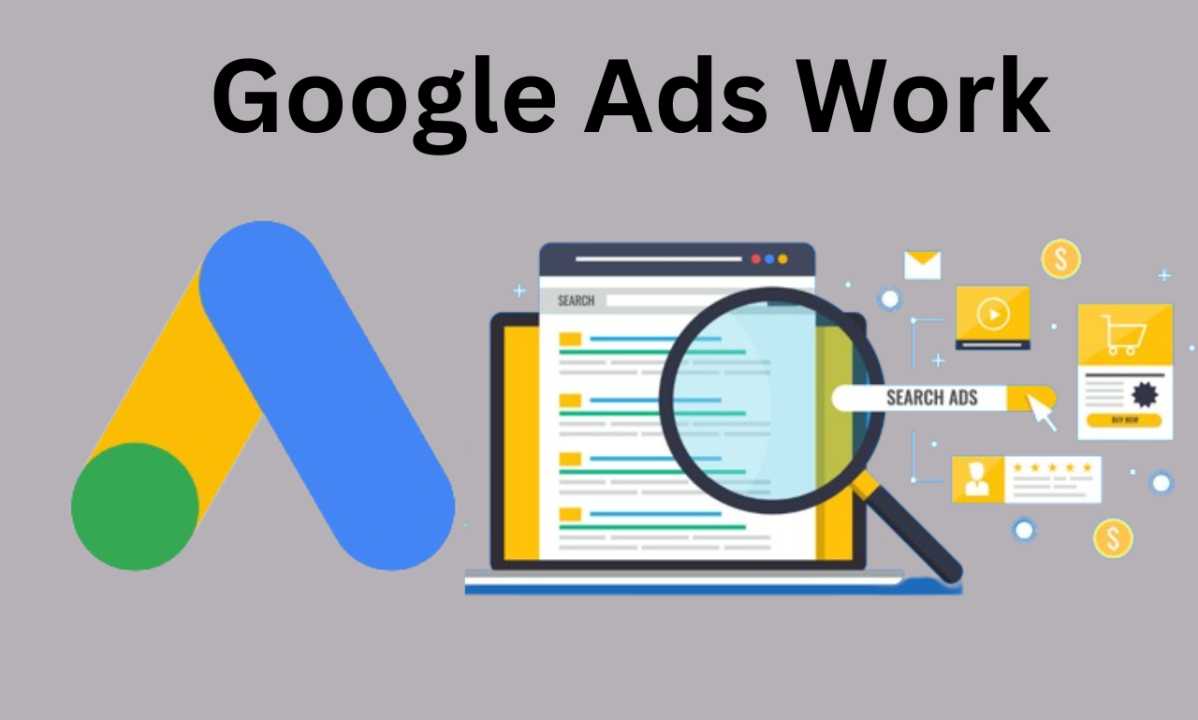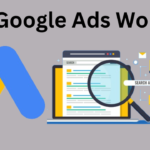Google Ads is a powerful online advertising platform developed by Google, enabling businesses to promote their products or services to a vast audience. It operates on a pay-per-click (PPC) model, meaning advertisers pay only when users interact with their ads. This guide provides a detailed explanation of Google Ads, its workings, and how you can use it to grow your business effectively.
Table of Contents
Introduction to Google Ads
How Google Ads Works
Types of Google Ads Campaigns
Benefits of Using Google Ads
Steps to Create a Google Ads Campaign
Tips for Running Successful Google Ads
FAQs About Google Ads
- Introduction to Google Ads
Google Ads, formerly known as Google AdWords, is Google’s online advertising platform. It allows businesses to create ads that appear on Google’s search engine results pages (SERPs), YouTube, and partner websites within the Google Display Network (GDN). With billions of daily searches on Google, it’s one of the most effective ways to reach a targeted audience.
Key Features:
Wide reach across search, display, video, and shopping platforms.
Advanced targeting options based on demographics, location, and interests.
Flexible budget control to suit businesses of all sizes.
- How Google Ads Works
Google Ads operates as an auction system where advertisers bid on keywords relevant to their products or services. Here’s how it works:
Keyword Selection: Advertisers choose keywords that potential customers might use to search for their offerings.
Ad Auction: When users perform searches, Google runs an auction to determine which ads to show.
Ad Rank: Ads are ranked based on a combination of bid amount and Quality Score (determined by ad relevance, expected click-through rate, and landing page experience).
Cost: Advertisers pay only when users click on their ads (PPC model).
- Types of Google Ads Campaigns
Google Ads offers several campaign types to suit various marketing goals:
- Search Campaigns:
Ads appear on Google’s SERPs when users search for specific keywords.
Ideal for driving website traffic and generating leads.
- Display Campaigns:
Visual ads appear on Google’s partner websites within the Display Network.
Great for building brand awareness.
- Video Campaigns:
Ads appear on YouTube and other video platforms.
Useful for engaging audiences with creative video content.
- Shopping Campaigns:
Product ads display on Google Shopping and SERPs.
Perfect for e-commerce businesses.
- App Campaigns:
Promotes mobile apps across Google’s network.
Helps increase app downloads and user engagement.
- Performance Max Campaigns:
Uses automation to show ads across all Google properties.
Optimized for achieving specific goals, like sales or lead generation.
- Benefits of Using Google Ads
Targeted Advertising: Reach specific audiences based on location, age, language, and interests.
Measurable Results: Track campaign performance with detailed analytics.
Cost Control: Set daily budgets and bids to control ad spend.
Fast Results: Generate traffic and leads almost immediately.
Increased Visibility: Boost your presence on Google’s search results.
Scalability: Adjust campaigns as your business grows.
- Steps to Create a Google Ads Campaign
Step 1: Set Your Goals
Define your advertising objectives, such as increasing sales, generating leads, or boosting brand awareness.
Step 2: Choose a Campaign Type
Select the campaign type that aligns with your goals (e.g., Search, Display, Video).
Step 3: Define Your Target Audience
Use Google’s targeting options to specify demographics, location, and keywords.
Step 4: Create Your Ad
Write compelling ad copy and design visuals that grab attention.
Step 5: Set Your Budget
Determine your daily or total campaign budget and bidding strategy (e.g., manual or automated bidding).
Step 6: Launch and Monitor
Start your campaign and use Google Ads tools to track performance. Optimize as needed.
- Tips for Running Successful Google Ads
Conduct Keyword Research: Use tools like Google Keyword Planner to find high-performing keywords.
Write Engaging Ad Copy: Highlight unique selling points (USPs) and include strong calls-to-action (CTAs).
Use Negative Keywords: Exclude irrelevant searches to save budget and improve ad relevance.
Optimize Landing Pages: Ensure landing pages are relevant, fast-loading, and user-friendly.
Test and Experiment: Run A/B tests to identify the best-performing ads and strategies.
Monitor Analytics: Regularly review metrics like click-through rate (CTR), cost-per-click (CPC), and conversion rates.
Leverage Remarketing: Target users who have already interacted with your website or ads.
- FAQs About Google Ads
Q1: How much does Google Ads cost?
Answer: The cost varies based on factors like industry, competition, and bidding strategy. Advertisers can set their own budgets.
Q2: Is Google Ads suitable for small businesses?
Answer: Yes, Google Ads offers flexible budgets and targeting options, making it ideal for businesses of all sizes.
Q3: Can I run ads without a website?
Answer: While it’s possible to use specific campaign types (e.g., local services ads) without a website, having one improves effectiveness.
Q4: How do I improve my ad’s Quality Score?
Answer: Focus on creating relevant ads, optimizing landing pages, and selecting appropriate keywords.
Q5: What is the difference between Google Ads and AdSense?
Answer: Google Ads is for advertisers to promote their offerings, while AdSense allows website owners to earn revenue by displaying ads.
Conclusion
Google Ads is a versatile and effective platform for businesses looking to grow their online presence and generate revenue. By understanding how it works, choosing the right campaign type, and following best practices, you can achieve measurable results. Start exploring Google Ads today to unlock its potential for your business in 2025 and beyond!










